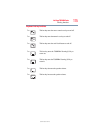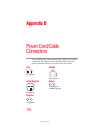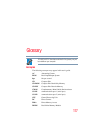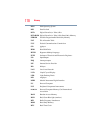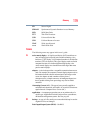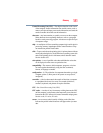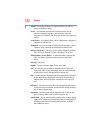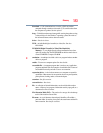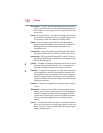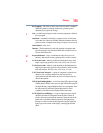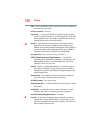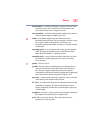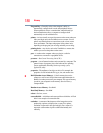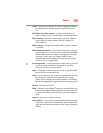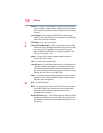
Glossary
183
download—(1) In communications, to receive a file from another
computer through a modem or network. (2) To send font data from
the computer to a printer. See also upload.
drag—To hold down the mouse button while moving the pointer to drag
a selected object. In the Windows
®
operating system, this refers to
the left mouse button, unless otherwise stated.
driver—See device driver.
DVD—An individual digital versatile (or video) disc. See also
DVD-ROM.
DVD-ROM (Digital Versatile [or Video] Disc Read-Only
Memory)—A very high-capacity storage medium that uses laser
optics for reading data. Each DVD-ROM can hold as much data as
several CD-ROMs. Compare CD-ROM.
E
emulation—A technique in which a device or program imitates another
device or program.
enable—To turn on a computer option. See also disable.
executable file—A computer program that is ready to run. Application
programs and batch files are examples of executable files. Names of
executable files usually end with a .bat or .exe extension.
expansion device—A device that connects to a computer to expand its
capabilities. Other names for an expansion device are port expander,
port replicator, docking station, or network adapter.
extension—See file extension.
external device—See device.
F
file—A collection of related information, saved on disk with a unique
name. A file may be a program, information used by a program, or a
document. See also document.
File Allocation Table (FAT)—The section of a storage drive that keeps
track of the location of stored files.
file name—A set of characters that uniquely identifies a file within a
particular folder. It consists of two parts: the actual name and the file
name extension. See also file extension.



